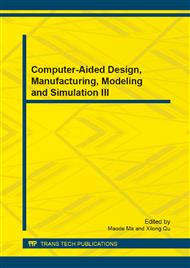p.623
p.629
p.634
p.639
p.643
p.649
p.653
p.657
p.662
A Study on Vascular Endothelial Growth Factor Gene-Modified Dermal Substitute Materials
Abstract:
In recent years, with the application of synthetic materials to supplant derma, much progress has been made in the research on the composition of composite skin substitute by culturing autologous/allogeneic skin cells plus derma. However, due to the fact that various skin substitutes and acellular dermal scaffolds are void of vascular structures, the transplant survival rate has been low. In this project, some dermal substitutes that are suitable for skin cells cultured in vitro are selected for the study. By means of genetic modification method, the dermal substitute containing human fibroblast shows a high level of expression of vascular endothelial cells, which not only promotes revascularization of the grafts, but improves the survival rate of transplant. The study opens up a new way in the reconstruction in vitro of a fully functional artificial skin substitute and the solution to the problem of insufficient autologous skin source.
Info:
Periodical:
Pages:
643-646
Citation:
Online since:
October 2013
Authors:
Price:
Сopyright:
© 2014 Trans Tech Publications Ltd. All Rights Reserved
Share:
Citation:


